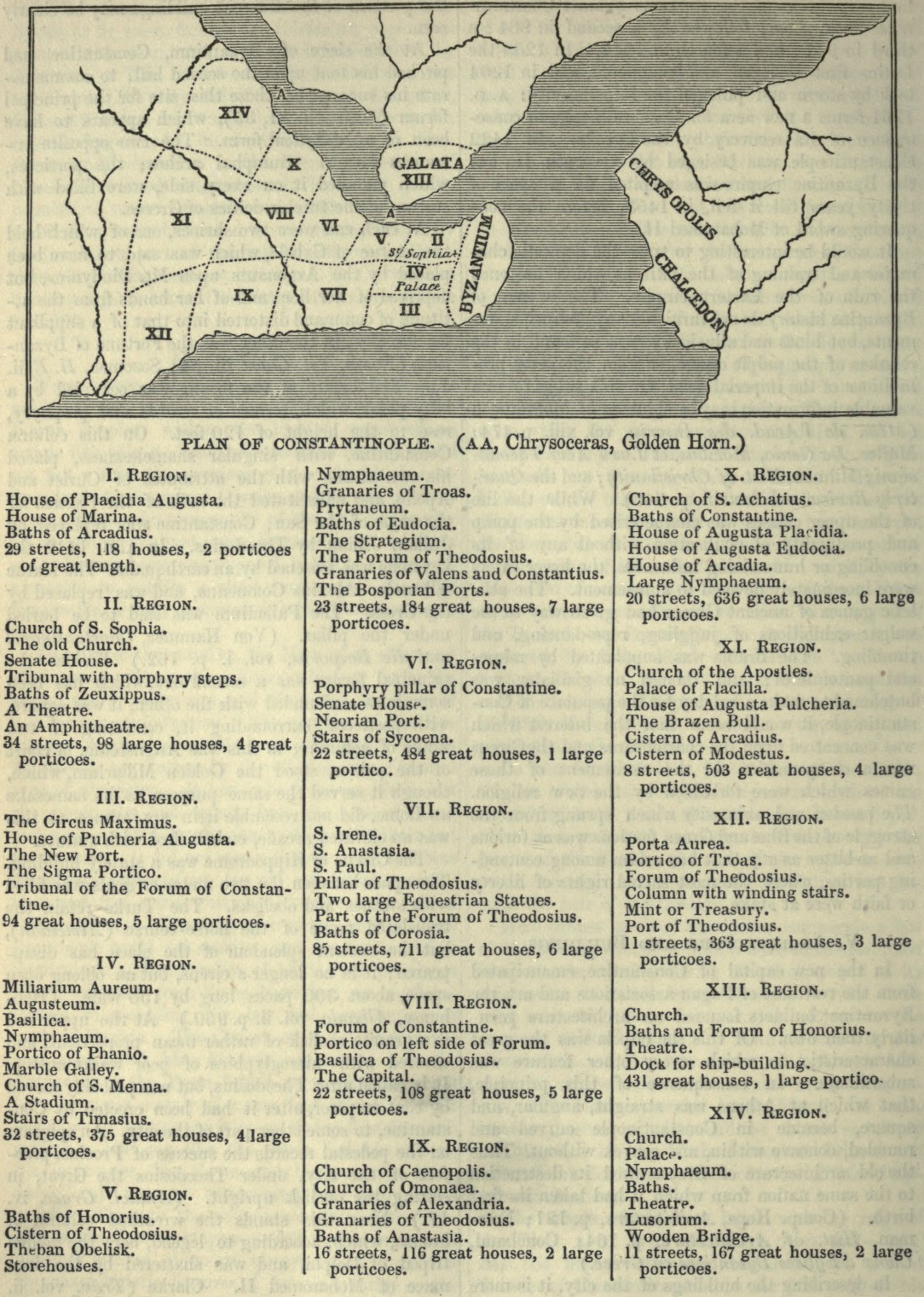Notitia urbis Constantinopolitanae on:
[Wikipedia]
[Google]
[Amazon]
 The ''Notitia Urbis Constantinopolitanae'' is an ancient "regionary", i.e., a list of monuments, public buildings and civil officials in
The ''Notitia Urbis Constantinopolitanae'' is an ancient "regionary", i.e., a list of monuments, public buildings and civil officials in
''Notitia Urbis Constantinopolitanae''
(notice by J.B. Bury) 5th century in the Byzantine Empire Latin prose texts Constantinople 5th-century works
Constantinople
la, Constantinopolis ota, قسطنطينيه
, alternate_name = Byzantion (earlier Greek name), Nova Roma ("New Rome"), Miklagard/Miklagarth (Old Norse), Tsargrad ( Slavic), Qustantiniya ( Arabic), Basileuousa ("Queen of Cities"), Megalopolis ( ...
during the mid-5th century (between 425 and the 440s), during the reign of the emperor Theodosius II
Theodosius II ( grc-gre, Θεοδόσιος, Theodosios; 10 April 401 – 28 July 450) was Roman emperor for most of his life, proclaimed ''augustus'' as an infant in 402 and ruling as the eastern Empire's sole emperor after the death of his ...
. The text lists the fourteen regions in which Constantinople was divided, along with the major public buildings such as fora, theatres, churches, palaces, baths and cisterns. It also lists the number of "houses" (''domus''), although there is uncertainty over the exact meaning of the term. Finally, the list includes the civil officials of each region, including the curator
A curator (from la, cura, meaning "to take care") is a manager or overseer. When working with cultural organizations, a curator is typically a "collections curator" or an "exhibitions curator", and has multifaceted tasks dependent on the parti ...
s, the heads of the associations (''collegia'') and the heads of neighbourhoods (''vicomagistri'').
The Latin
Latin (, or , ) is a classical language belonging to the Italic branch of the Indo-European languages. Latin was originally a dialect spoken in the lower Tiber area (then known as Latium) around present-day Rome, but through the power of the ...
text of the ''Notitia Urbis Constantinopolitanae'' was published by Otto Seeck, as an appendix to his edition of the '' Notitia Dignitatum'' (1876). The first English translation by John Matthews was published in 2012 in the book ''Two Romes: Rome and Constantinople in Late Antiquity'' edited by Lucy Grig and Gavin Kelly. The ''Notitia Urbis'' was probably written between 447 and 450 and goes back to official sources. Although the simple lists are not always easy to understand, the ''Notitia Urbis'' helps to know what the city must have looked like before Justinian
Justinian I (; la, Iustinianus, ; grc-gre, Ἰουστινιανός ; 48214 November 565), also known as Justinian the Great, was the Byzantine emperor from 527 to 565.
His reign is marked by the ambitious but only partly realized ''renovat ...
's building program.
See also
*''Parastaseis syntomoi chronikai
''Parastaseis syntomoi chronikai'' ( el, Παραστάσεις σύντομοι χρονικαί, "brief historical notes") is an eighth- to ninth-century Byzantine text that concentrates on brief commentary connected to the topography of Constan ...
''
*''Patria of Constantinople The ''Patria'' of Constantinople ( el, Πάτρια Κωνσταντινουπόλεως), also regularly referred to by the Latin name ''Scriptores originum Constantinopolitarum'' ("writers on the origins of Constantinople"), are a Byzantine collec ...
''
* 14 regions of Constantinople
Bibliography
{{Cite book, last=Matthews, first=John, url=https://www.worldcat.org/oclc/796196995, title=Two Romes: Rome and Constantinople in late Antiquity, publisher=Oxford University Press, year=2012, isbn=978-0-19-973940-0, editor-last=Grig, editor-first=Lucy, location=Oxford, pages=81-115, chapter=The ''Notitia Urbis Constantinopolitanae'', oclc=796196995, editor-last2=Kelly, editor-first2=GavinExternal links
''Notitia Urbis Constantinopolitanae''
(notice by J.B. Bury) 5th century in the Byzantine Empire Latin prose texts Constantinople 5th-century works